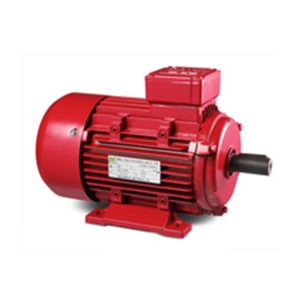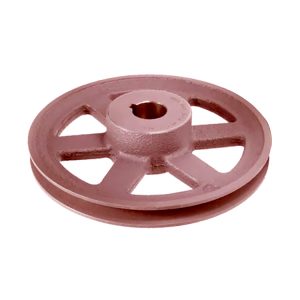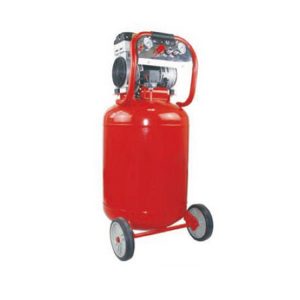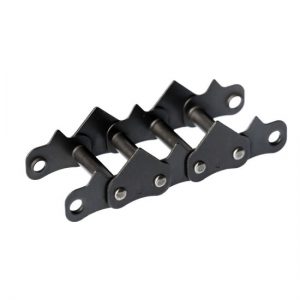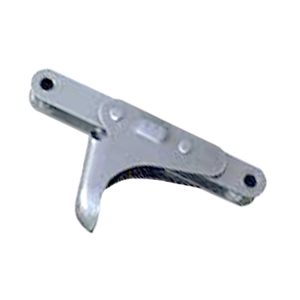Product Description
| Place of Origin: | HangZhou HangZhou (Mainland) |
| Model: | MXL XL L H XH XXH T2.5 T5 T10 T20 AT5 AT10 AT20 3M 5M 8M 14M 20M S2M S3M S4.5M S5M S8M S14M P5M P8M P14M etc and other special models |
| Material: | Stainless Steel, Brass/Copper, Aluminum, POM, and other standard machineable material. |
| Module: | 7-160mm, Max.Diameter:1400mm. |
| Grade: | Can up to GB8, ISO8, JIS4, AGMA8, DIN8. |
| Packing: | Export standard Quality Cartons (With Pallet) |
| Payment: | 30% TT in Advance, balance before delivery |
| Delivery | About 7 Days after receiving 30% T/T payment in advance |
| Surface Treatment: | Anodized, Hard Anodized, Zinc plated, blackening treatment |
| Inspection: | All items are checked and tested thoroughly during every working procedure and after the product is finally manufactured to ensure that best quality product goes out in the market. |
Applicable industry: Electro-machinery, Textile Machinery, Advertisement printing equipment, Food Packaging, CNC machine, Instrumentation, tobacco and so on
Note when checking from and order pulley
1. Belt and pulley of our company can be attached or replaced by imported belt and pulley
2. Please supply drawing when you order. We can also draw for you if you can tell us the
Material, teeth type, teeth number, belt width or teeth width, bore, Threaded hole or
Thru-hole,key and other size you need
3. We can also customize non-standard products for customers
4. Tolerance: conform to customers requirment
5. OEM/ODM service: orrered
6. If you need samples, please contect us. About the sample charge, we can consult it.
/* January 22, 2571 19:08:37 */!function(){function s(e,r){var a,o={};try{e&&e.split(“,”).forEach(function(e,t){e&&(a=e.match(/(.*?):(.*)$/))&&1
| Certification: | CE, ISO |
|---|---|
| Pulley Sizes: | Type B |
| Manufacturing Process: | Hobbing |
| Material: | Iron |
| Surface Treatment: | Electroplating |
| Application: | Chemical Industry, Grain Transport, Mining Transport, Power Plant |
| Samples: |
US$ 0.55/Piece
1 Piece(Min.Order) | |
|---|
| Customization: |
Available
| Customized Request |
|---|
How do pulleys function in various types of vehicles and machinery?
Pulleys play crucial roles in numerous types of vehicles and machinery, enabling the transmission of power, control of mechanical systems, and efficient operation. Here’s how pulleys function in various applications:
1. Automotive Engines: In vehicles, pulleys are commonly used in the engine’s accessory drive system. The crankshaft pulley, also known as the harmonic balancer, is connected to the engine’s crankshaft and drives various accessories such as the alternator, power steering pump, and air conditioning compressor. The pulleys enable the transfer of rotational power from the engine to these accessories, allowing them to perform their respective functions.
2. Belt-Driven Systems: Pulleys are extensively used in belt-driven systems across various machinery and equipment. These systems utilize belts, such as V-belts or timing belts, which wrap around pulleys to transfer power. Examples include conveyor systems, industrial machinery, agricultural equipment, and HVAC systems. The pulleys provide the necessary grip and tension to ensure efficient power transmission and drive system operation.
3. Cranes and Hoists: Pulleys are integral components of cranes and hoists, enabling the lifting and movement of heavy loads. Multiple pulleys, often arranged in a block and tackle configuration, are used to create mechanical advantage, reducing the effort required to lift the load. By distributing the load’s weight over multiple strands of rope or cable, pulleys allow for controlled lifting and precise positioning of objects.
4. Construction Equipment: Pulleys are found in various types of construction machinery. For example, in excavators and cranes, pulleys are used in the wire rope systems for lifting and lowering the boom, bucket, or other attachments. Pulleys help in managing the forces involved in these operations, providing smooth and controlled movement.
5. Elevators: Pulleys are essential components in elevator systems. Elevator cars are suspended by steel cables that run over pulleys. These pulleys are connected to an electric motor through a system of gears and sheaves. As the motor rotates the pulleys, the elevator car moves up or down. Pulleys in elevator systems help in efficiently transferring power and maintaining the stability and safety of vertical transportation.
6. Exercise Equipment: Pulleys are widely used in exercise machines and gym equipment to provide resistance and enable adjustable resistance levels. By incorporating pulley systems with different configurations and cable arrangements, exercise equipment can offer a variety of exercises targeting specific muscle groups.
7. Marine Applications: Pulleys are utilized in various marine applications, such as sailboats and winches. Pulleys help in controlling the movement and tension of ropes and cables, enabling sail adjustments, mast raising and lowering, and other rigging operations.
8. Garage Doors: Pulleys are employed in garage door mechanisms to facilitate the smooth opening and closing of the doors. They are used in conjunction with cables or belts, allowing for the transfer of force from the door opener to the door itself.
These examples demonstrate the versatility and importance of pulleys in a wide range of vehicles and machinery. By utilizing pulleys, these systems can achieve efficient power transmission, mechanical advantage, controlled movement, and improved functionality.
How are pulleys used in manufacturing processes and assembly lines?
Pulleys play a crucial role in manufacturing processes and assembly lines, facilitating the movement of materials, components, and products. They are utilized in various ways to enhance efficiency, increase productivity, and streamline production. Here’s how pulleys are commonly used in manufacturing processes and assembly lines:
1. Conveyor Systems:
Pulleys are extensively employed in conveyor systems, which are integral to manufacturing and assembly lines. Conveyor belts or chains run over pulleys at different points along the line, transporting materials or products from one workstation to another. The pulleys help guide and support the conveyor belts or chains, ensuring smooth and controlled movement. By utilizing pulleys of different sizes or configurations, conveyor systems can be designed to accommodate various layouts, inclines, or speed requirements.
2. Material Handling:
Pulleys are used to facilitate the lifting, lowering, and movement of materials in manufacturing processes. Cranes, hoists, and lifting equipment often incorporate pulley systems to provide mechanical advantage and precise control over heavy loads. The pulleys, along with ropes, cables, or chains, allow operators to lift and position materials with minimal effort and improved safety.
3. Assembly Line Automation:
In automated manufacturing and assembly lines, pulleys are utilized in robotic systems to control the movement of robotic arms. The pulleys are incorporated into the mechanism that guides the cables or belts connected to the robotic arms. By adjusting the position and tension of the pulleys, precise and coordinated movements can be achieved, enabling efficient assembly processes.
4. Tensioning and Alignment:
Pulleys are crucial for maintaining proper tension and alignment in manufacturing processes. Tensioning pulleys are used to apply the appropriate tension to belts or chains, ensuring optimal power transmission and preventing slack or slipping. Alignment pulleys are employed to align belts or chains, minimizing wear, reducing vibrations, and prolonging the life of the components.
5. Power Transmission:
Pulleys are central to power transmission in manufacturing processes and assembly lines. They are used in conjunction with belts, chains, or gears to transfer rotational motion and power from one component to another. By selecting pulleys of different sizes or ratios, the speed and torque can be adjusted to suit specific production requirements.
6. Tool and Machine Positioning:
In manufacturing processes, pulleys are often integrated into tool positioning systems or adjustable machine setups. By using pulleys and cables, tools or machine components can be easily repositioned, allowing for quick changeovers or adjustments to accommodate different workpieces or production tasks.
Overall, pulleys are indispensable in manufacturing processes and assembly lines, enabling efficient material handling, precise movement control, proper tensioning and alignment, power transmission, and flexible tool positioning. Their use contributes to increased productivity, improved workflow, and enhanced automation in the manufacturing industry.
How does a fixed pulley differ from a movable pulley?
A fixed pulley and a movable pulley are two distinct types of pulleys that differ in their design and functionality. Here’s a detailed explanation of their differences:
1. Design and Attachment: A fixed pulley is attached to a stationary structure, such as a ceiling or wall, using a mounting bracket or other means. It remains fixed in place and does not move during operation. In contrast, a movable pulley is attached to the load being moved and moves along with it. It is typically suspended by a rope or cable and can freely move up and down.
2. Mechanical Advantage: When it comes to mechanical advantage, a fixed pulley does not provide any advantage. It changes the direction of the force applied but does not reduce the effort required to lift the load. On the other hand, a movable pulley provides mechanical advantage by reducing the effort needed to lift the load. It distributes the load between the rope segments attached to the movable pulley and the fixed point, making it easier to lift heavy objects.
3. Force Distribution: In a fixed pulley, the force applied to one end of the rope or belt is redirected to change the direction of the force. The load is lifted by pulling the opposite end of the rope. In this case, the force required to lift the load is equal to the weight of the load itself. In a movable pulley, the load is attached to the movable pulley itself. The force required to lift the load is reduced because the weight of the load is distributed between the rope segments attached to the movable pulley and the fixed point.
4. Directional Change: Both fixed and movable pulleys are capable of changing the direction of the applied force. However, the primary function of a fixed pulley is to change the direction of force, while a movable pulley combines force direction change with mechanical advantage. The movable pulley allows the operator to exert force in a more convenient direction while requiring less effort to lift the load.
5. Applications: Fixed pulleys are commonly used in combination with other pulleys to create more complex systems, such as block and tackle arrangements. They are often used in scenarios where the primary objective is to change the direction of force. Movable pulleys, on the other hand, are frequently used in systems that require mechanical advantage or a reduction in the effort needed to lift heavy objects. They are often found in applications such as lifting systems, cranes, and elevators.
Overall, the key differences between a fixed pulley and a movable pulley lie in their design, mechanical advantage, force distribution, and applications. While a fixed pulley primarily changes the direction of force, a movable pulley combines force direction change with mechanical advantage, making it easier to lift heavy loads.
editor by CX
2024-04-15










